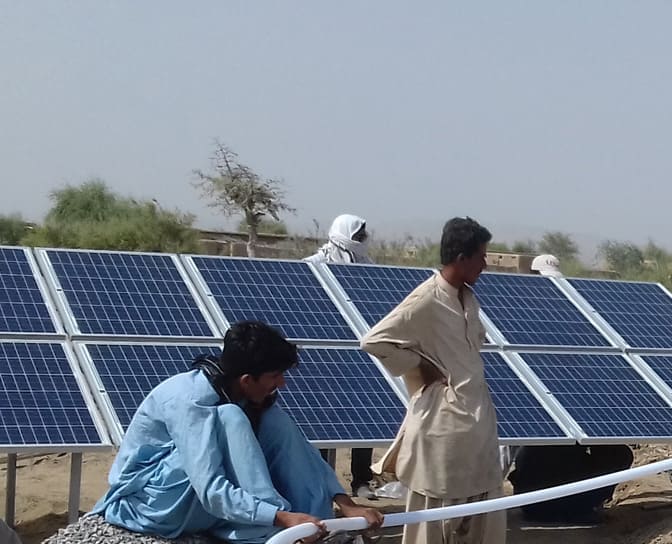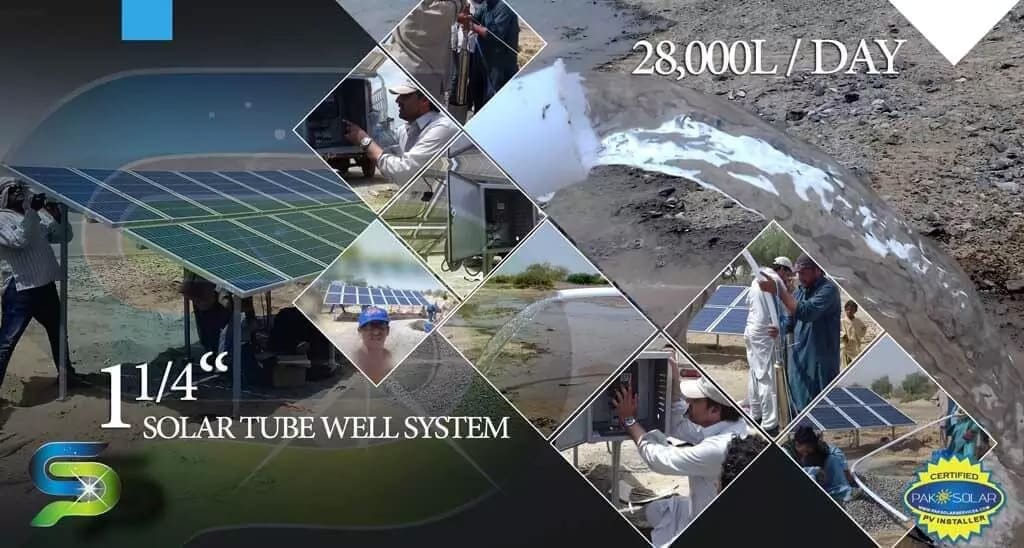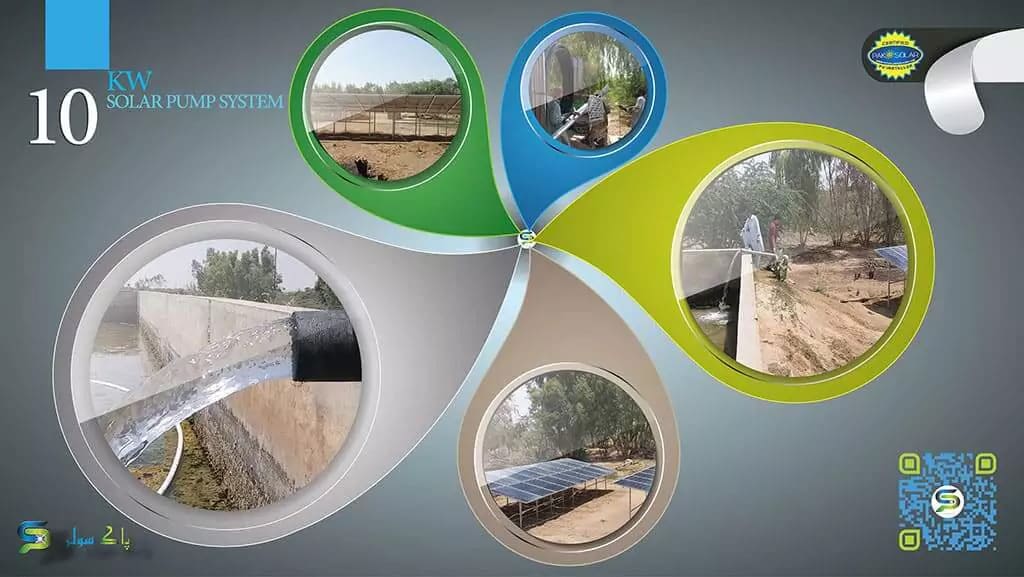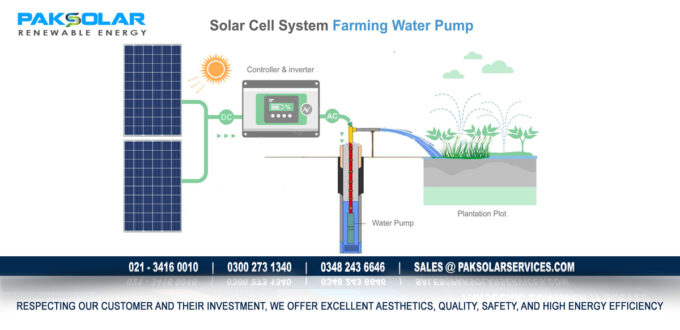Solar Pumps for Agriculture in Pakistan
Introduction
In recent years, the use of solar-powered systems has gained popularity as a sustainable and cost-effective alternative to traditional energy sources. Solar pumps, in particular, have emerged as a game-changer for the agriculture sector in Pakistan, especially in region like Sindh, Punjab and Baluchistan. This article aims to explore the cost of solar pumps for agriculture in Pakistan, and shed light on their benefits, installation process, and long-term savings.
By the end of this article, you’ll have a comprehensive understanding of how solar pumps can revolutionize agricultural practices in Pakistan while being mindful of their financial implications.
Understanding Solar Pumps
Solar pumps are devices that harness energy from the sun to power water pumping systems. The absence of grid dependency and the availability of ample sunlight in Pakistan make solar pumps an ideal choice for farmers looking to reduce their reliance on fossil fuels and cut down on energy costs.
Benefits of Solar Pumps for Agriculture
2.1. Cost Savings
One of the primary advantages of using solar pumps for agriculture is the significant reduction in operational costs. By harnessing the power of renewable solar energy, farmers can evade the expenses linked to diesel or electricity-based pumps, including fuel costs and electricity bills. Furthermore, despite the seemingly higher initial investment, the long-term savings far surpass the upfront expenditure, thereby establishing a more sustainable and financially viable solution.
2.2. Environmentally Friendly
Solar pumps contribute to a cleaner and greener environment by eliminating the need for fossil fuel-powered pumps. With no greenhouse gas emissions, solar pumps help mitigate the environmental impact associated with traditional pumping methods. The use of renewable energy aligns with global efforts to combat climate change and reduce carbon footprints.
2.3. Reliability and Durability
The manufacturers design solar pumps to ensure reliability and durability, with minimal maintenance requirements. The builders construct them to withstand harsh weather conditions and enable efficient operation even in remote or off-grid locations. This reliability ensures a consistent water supply for irrigation, supporting agricultural productivity and crop yields.
Installation Process

The installation of a solar pump system involves several components, including solar panels, a submersible pump, a controller, and a storage tank. Following a brief overview of the installation process:
3.1. Assessing Water Requirements
Before installing a solar pump, it’s crucial to determine the water requirements based on factors like crop type, area of cultivation, and irrigation method. This assessment helps determine the pump’s capacity and the number of solar panels required for optimal performance.
3.2. Solar Panel Placement
One should strategically position solar panels to ensure they receive maximum sunlight throughout the day. The angle and orientation of the panels play a crucial role in optimizing energy generation. It’s advisable to consult with solar experts or technicians to ensure proper placement and alignment for optimal efficiency.
3.3. Pump and Controller Installation
Once you have positioned the solar panels, proceed to install the submersible pump and controller. Subsequently, farmers typically submerge the pump in the water source, while they rely on the controller to assume the responsibility of managing the flow and regulating the pump’s performance. Additionally, the controller plays a vital role in safeguarding the system against voltage fluctuations, ensuring optimal energy utilization.
3.4. Storage Tank Integration
In some cases, a storage tank may be required to store water for later use. The storage tank can be connected to the solar pump system, allowing farmers to have a steady water supply even during periods of low sunlight or at night.

Cost Analysis
While the initial investment in solar pumps may be higher compared to traditional pumps, it’s essential to consider the long-term financial benefits. Additionally, the cost of solar pumps for agriculture in Pakistan depends on various factors, including the capacity of the pump, the number of solar panels needed, and the installation costs. Here’s a breakdown of the cost analysis:
4.1. Equipment and Installation Costs
The cost of solar pumps for agriculture in Pakistan typically includes the price of the pump, solar panels, controller, storage tank (if applicable), mounting structure, wiring, and installation charges. The prices can vary depending on the brand, quality, and capacity of the equipment. It’s recommended to consult with reputable solar providers who can provide accurate cost estimates based on your specific requirements.
4.2. Operational and Maintenance Costs
One of the significant advantages of solar pumps is their low operational and maintenance costs. Since solar pumps rely on sunlight, there are no fuel expenses or electricity bills to consider. Routine maintenance, such as cleaning the solar panels and checking the system for any faults, is minimal compared to traditional pumps. These cost savings contribute to the long-term viability of solar pumps for agriculture in Pakistan.
Government Subsidies and Financial Incentives
To promote the adoption of renewable energy in the agricultural sector, the government of Pakistan and various organizations offer subsidies and financial incentives for installing solar pumps. These initiatives aim to reduce the financial burden on farmers and encourage the transition to sustainable energy solutions. It’s advisable to research and inquire about available subsidies or grants that can help offset the initial investment and make solar pumps more affordable.

Conclusion
The cost of solar pumps for agriculture in Pakistan is influenced by various factors such as equipment, installation, capacity, and government incentives. Despite the higher initial investment, the long-term benefits and savings make solar pumps attractive. Moreover, they reduce operational costs, provide reliable water supply, and contribute to a cleaner environment. Additionally, by embracing solar pumps, farmers in Pakistan can enhance their agricultural practices, improve crop yields, and pave the way for a sustainable future. It’s important to remember that investing in solar pumps is not just a financial decision; it’s also a commitment to building a greener and more resilient agricultural sector in Pakistan.
- How to Monetize Your Facebook Page: A Comprehensive Guide - July 22, 2023
- Avoiding Plagiarism: Your Ticket to Originality and Academic Success! - July 21, 2023
- Chat-GPT: Your Friendly AI Pal for Awesome Conversations! - July 20, 2023


No Comments Yet